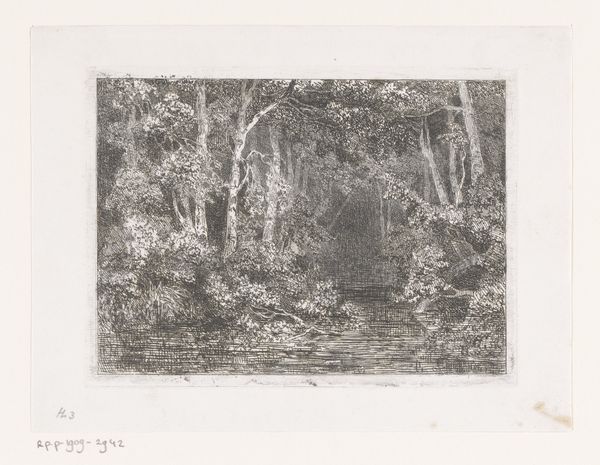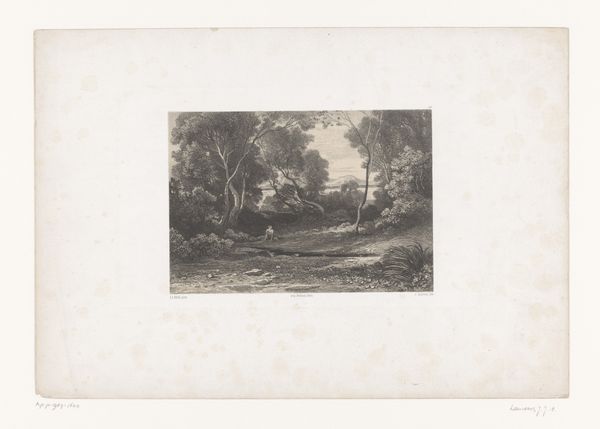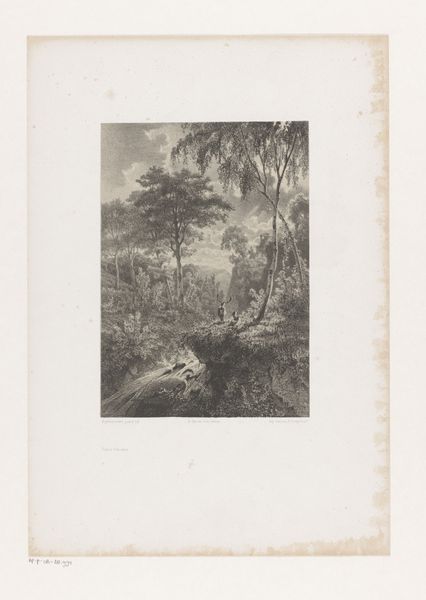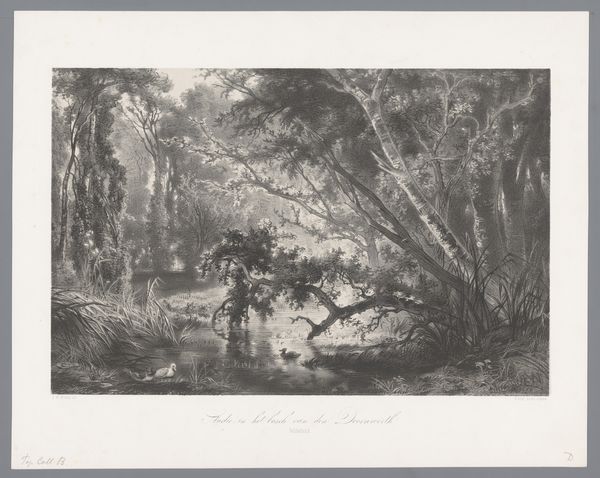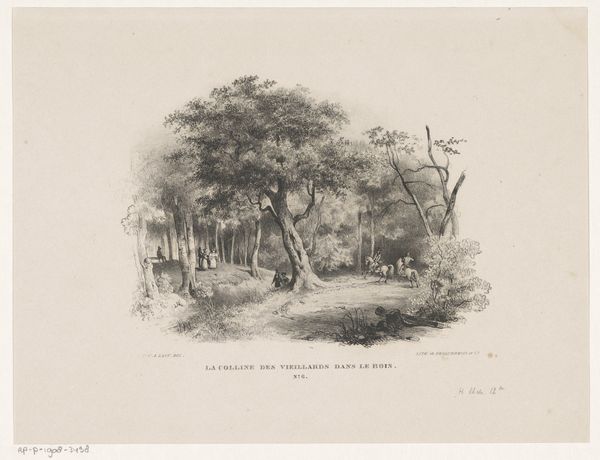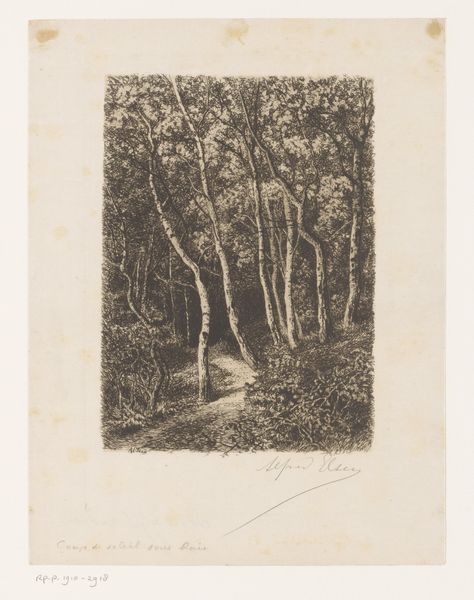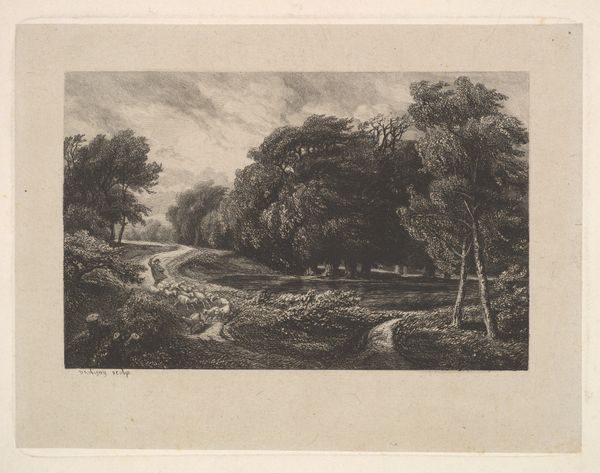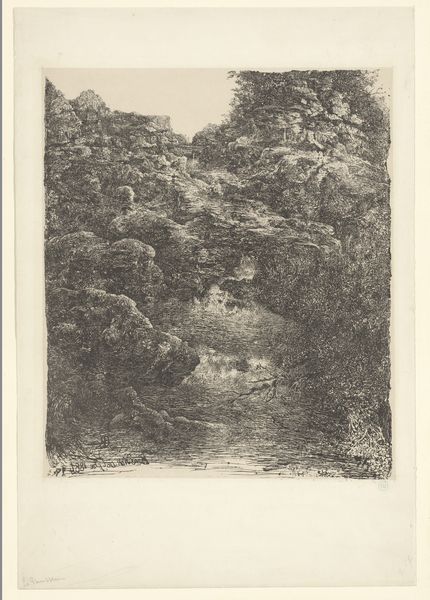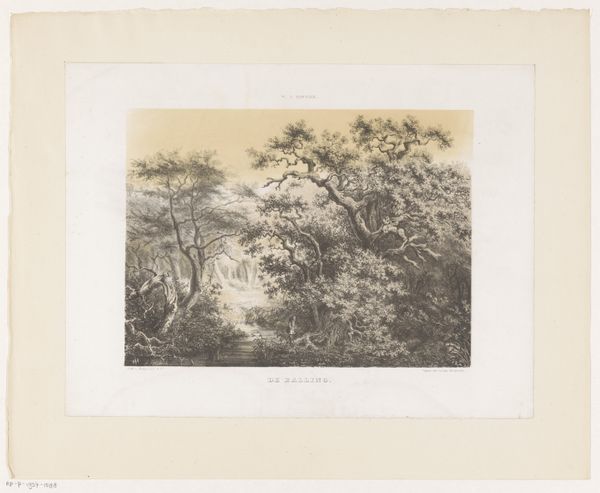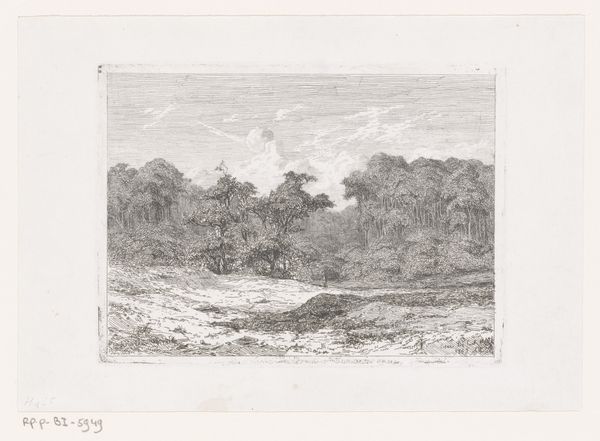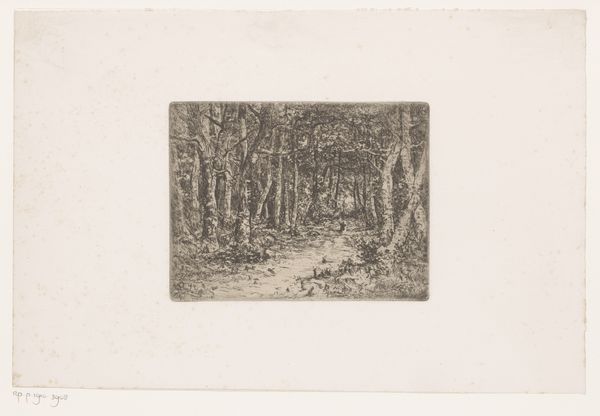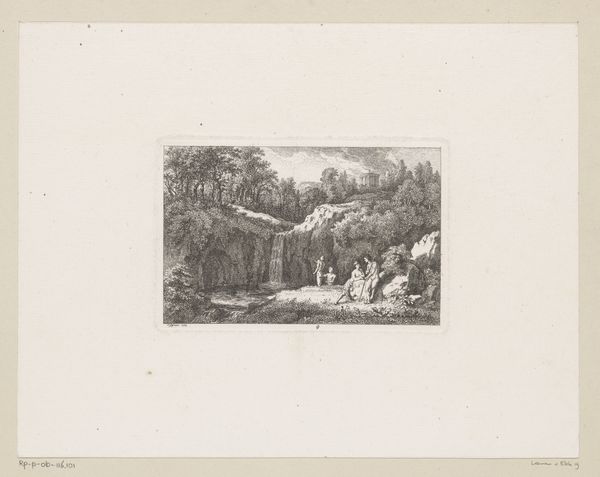
drawing, etching, paper
#
pencil drawn
#
drawing
#
light pencil work
#
ink paper printed
#
etching
#
pencil sketch
#
landscape
#
paper
#
forest
#
romanticism
Dimensions: height 116 mm, width 160 mm
Copyright: Rijks Museum: Open Domain
Curator: Let's turn our attention to this tranquil image by César de Cock titled "Doorkijk in het bos," created in 1848. It’s an etching, ink on paper. Editor: My immediate impression is of a meticulously crafted, almost claustrophobic stillness. The tight framing forces my gaze into the depths of the woods. Curator: That sense of depth is key. The “doorkijk,” or view through, typical of Dutch landscape painting, presents the forest as both inviting and impenetrable, resonating with the Romantic era’s fascination with nature's sublimity. Note also, the forest as a space in Germanic mythos and symbolism. Editor: Yes, but how the composition funnels your eye, the deliberate arrangement of light and dark, those areas of dense foliage creating such dramatic chiaroscuro… It almost borders on the theatrical. The surface texture created by the etching technique is quite rich too. Curator: Exactly. And it recalls the persistent Germanic symbols and myths that existed as a constant source of cultural reference from the dark ages into modern cultural memory. Forests carry connotations of shelter, refuge, but also hidden dangers, secrets. This etching would echo potent stories for the people viewing it, wouldn't it? Editor: True, but to look at just the rendering of form, the contrast in textures—the smooth trunks versus the bristling leaves, adds visual intrigue. There’s tension created by this play between clarity and obscurity. Curator: Think about how the trees are portrayed not just as trees, but as individual, almost personified, entities. In Germanic lore, trees were often seen as sacred dwellings, as totems imbued with power. That perspective emphasizes a harmonious relationship between humanity and the natural world, offering spiritual meaning as a continuous element. Editor: I'd add how those linear patterns formed from the ink give everything, especially in the foreground, an intense, tactile quality. Curator: Ultimately, de Cock presents us with a landscape that functions both as a physical place and a mirror reflecting the psychological states and collective memories linked with wild nature. Editor: Yes. By looking at the composition we are made more aware of how that psychological symbolism enters our awareness. Curator: A potent combination indeed!
Comments
No comments
Be the first to comment and join the conversation on the ultimate creative platform.
